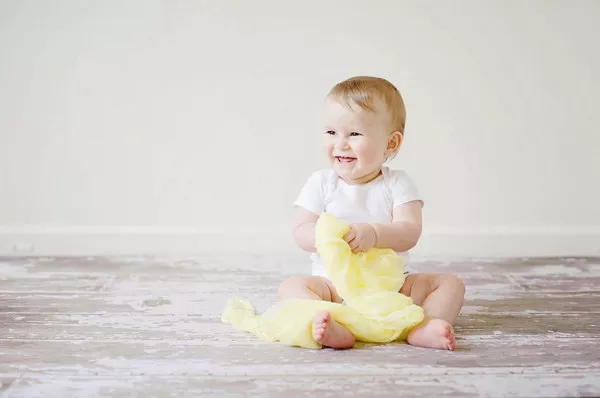As parents, ensuring the comfort and safety of our children is paramount, and this extends to the shoes they wear. Baby shoes are not just a fashion accessory; they play a crucial role in supporting healthy foot development and providing protection as your little one explores the world. However, determining the correct size can be challenging, especially considering how fast babies grow. In this comprehensive guide, we will explore whether sizing up baby shoes is advisable, providing valuable insights to help you make informed decisions for your child’s footwear.
Understanding Baby Foot Development:
Before delving into the sizing dilemma, it’s essential to understand the unique characteristics of baby feet. Babies are born with soft, pliable cartilage in their feet that gradually ossifies into bones over time. This process continues throughout childhood, with the arch of the foot developing gradually as the child gains strength and stability.
Additionally, babies tend to have chubby, pudgy feet with a high fat content, making them appear wider than they actually are. Their toes may also splay out naturally, which is perfectly normal and accommodates their need for balance and stability.
Factors to Consider When Sizing Baby Shoes:
1. Age and Growth Rate: Babies grow at an astonishing rate, especially during the first year of life. It’s not uncommon for them to outgrow clothing and shoes within weeks or months. Therefore, when sizing baby shoes, it’s crucial to consider your child’s age and growth rate.
2. Foot Measurement: One of the most reliable ways to determine the correct shoe size for your baby is by measuring their feet. Use a soft tape measure or a specially designed foot measuring tool to measure the length and width of your baby’s feet while they are standing. Be sure to measure both feet, as they may differ slightly in size.
3. Comfort and Mobility: A properly fitting shoe should provide ample room for your baby’s toes to wiggle without being too loose. It should also offer sufficient support and stability to aid in your baby’s mobility. Pay attention to any signs of discomfort or irritation, such as redness or blisters, which may indicate that the shoes are too small or too tight.
4. Shoe Construction: Opt for shoes made from breathable materials with flexible soles that mimic barefoot walking as closely as possible. Avoid rigid shoes or those with excessive padding, as they can restrict natural foot movement and hinder proper development.
The Case for Sizing Up:
While it may be tempting to size up baby shoes to accommodate growth and prolong wear, there are certain instances where doing so may be warranted:
1. Room for Growth: If your child is on the cusp between two shoe sizes, opting for the larger size can provide additional room for growth, extending the lifespan of the shoes. However, be cautious not to size up too much, as excessively large shoes can pose tripping hazards and compromise stability.
2. Seasonal Considerations: In colder climates, you may need to size up to accommodate thicker socks or booties during the winter months. Keep in mind that layering socks can affect the fit of the shoes, so adjust accordingly to ensure a comfortable fit.
3. Wide Feet or High Insteps: If your baby has wide feet or a high instep, they may require shoes with a roomier toe box to prevent constriction and discomfort. In such cases, sizing up or opting for shoes with adjustable closures, such as Velcro straps or elastic laces, can provide a more accommodating fit.
4. Special Occasions: For special occasions or events where your baby will be wearing shoes for an extended period, such as weddings or family gatherings, sizing up slightly can help prevent discomfort and allow for longer wear without causing undue pressure on their feet.
The Importance of Proper Fit:
While there are instances where sizing up may be appropriate, it’s essential to prioritize proper fit above all else. Ill-fitting shoes can lead to a host of foot problems, including blisters, calluses, and ingrown toenails, which can be painful for your little one and may impact their overall foot health in the long run.
To ensure a proper fit, consider the following tips:
1. Regular Foot Measurements: Babies’ feet can grow quickly, so it’s essential to measure their feet regularly to ensure they are wearing the correct size. Aim to measure their feet every few months or whenever you notice a significant growth spurt.
2. Try Before You Buy: When shopping for baby shoes, always have your child try them on before making a purchase. Pay attention to how the shoes fit, making sure there is adequate room for their toes to move freely and no areas of pressure or rubbing.
3. Seek Professional Advice: If you’re unsure about the correct shoe size for your baby or have concerns about their foot development, don’t hesitate to seek advice from a pediatrician or a professional shoe fitter. They can provide valuable guidance and recommendations based on your child’s unique needs.
4. Monitor for Signs of Discomfort: Pay attention to your baby’s cues when wearing shoes, such as fussiness, reluctance to walk, or red marks on their feet. These may indicate that the shoes are too small or causing discomfort and should be addressed promptly.
Conclusion:
Choosing the right size of baby shoes is a balancing act between accommodating growth and ensuring proper fit and comfort. While sizing up may be necessary in certain situations, it’s crucial to prioritize the health and well-being of your child’s feet above all else. By understanding the factors that influence shoe sizing and following best practices for fitting, you can ensure that your little one’s first steps are supported and comfortable as they embark on their journey of exploration and discovery.


